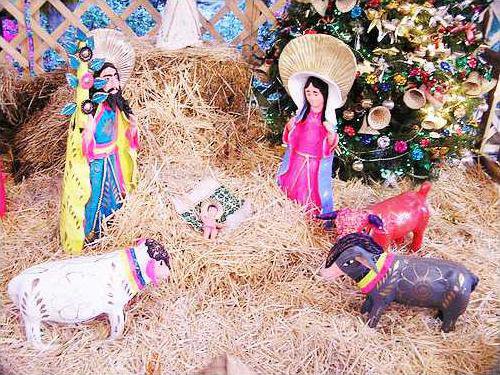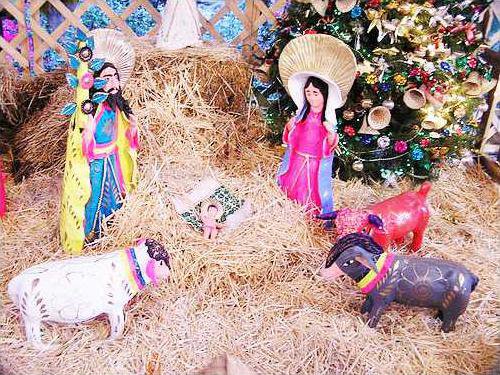Many Portuguese Americans celebrate Christmas with an emphasis on the nativity, and as a time to rejoice in the birth of Jesus Christ.
“Christmas is a feast where we celebrate the reincarnation of God becoming one of us through his son,” said Father Manuel of Our Lady of Assumption Catholic Parish in Turlock.
Christmas Eve is spent gathered around a Christmas tree and the Crèche. The Crèche is Portuguese for the Nativity Scene, which is a depiction of the birth of Jesus, and includes traditional figures like the Virgin Mary, St. Joseph, the three wise men bearing gifts, a shepherd, and barnyard animals. The scene can be constructed out of paintings, figurines, or even live pantomimes.
“The manger scene is observed by the congregation. Some get to be pretty elaborate. The scene has a big place in the hearts of the Portuguese people. People get emotionally involved,” said Father Manuel.
On Christmas Eve, many Portuguese families attend Midnight Mass, also known as “Missa do Galo.” Father Manuel said that Midnight Mass is a popular ceremony, and draws in the largest crowds throughout the year.
“We have attractions for the children. The angels sing—usually performed by young women—and the children bring a candle and make a semi-circle around the alter. We have a Portuguese choir, and at the end of mass, we pay homage to Jesus. People touch the little statue of Jesus and pray,” he said.
Most children in Portugal write letters to the infant Jesus (“Menino Jesus”) asking for presents rather than associating the holiday with Santa Claus. Angels and saints take the place of elves.
On Christmas Eve, dinner is known as “consoada,” which consists of codfish with boiled potatoes and cabbage. The next course is full of fried sweets, such as “filhoses,” a fried dough with sprinkled sugar; “Rabanadas,” a similar form of French toast; and “azevias,” a round cake. One of the most traditional of desserts is “Bolo Rei,” a fruitcake that holds two items inside. One item is a fake ring, medal, or other small surprise. The other item is a raw broad bean. Whoever gets the bean in their dessert must make or buy the “Bolo Rei” the next year.
After mass and dinner, children are encouraged to open their presents. Some regional traditions opt to open their presents Christmas morning. Instead of hanging stockings, Portuguese families place one shoe (“sapatinho”) from each child next to the hearth or Christmas tree.
Christmas Day varies by family while Christmas Eve follows traditional religious standards. Father Manuel intends to celebrate Christmas by giving to others, and acting out religious ceremonies.
“This year we are bringing gifts to the poor in orphanages in Brazil. On Christmas Day, we act out the gospel where we act as Joseph, Mary, and little Jesus. We are with the angels praying for peace on Earth. It makes the world whole. We surround ourselves by the heavenly host where human dignity can flourish,” he said.
— BROOKE BORBA
209 reporter
Portuguese traditions center around nativity





